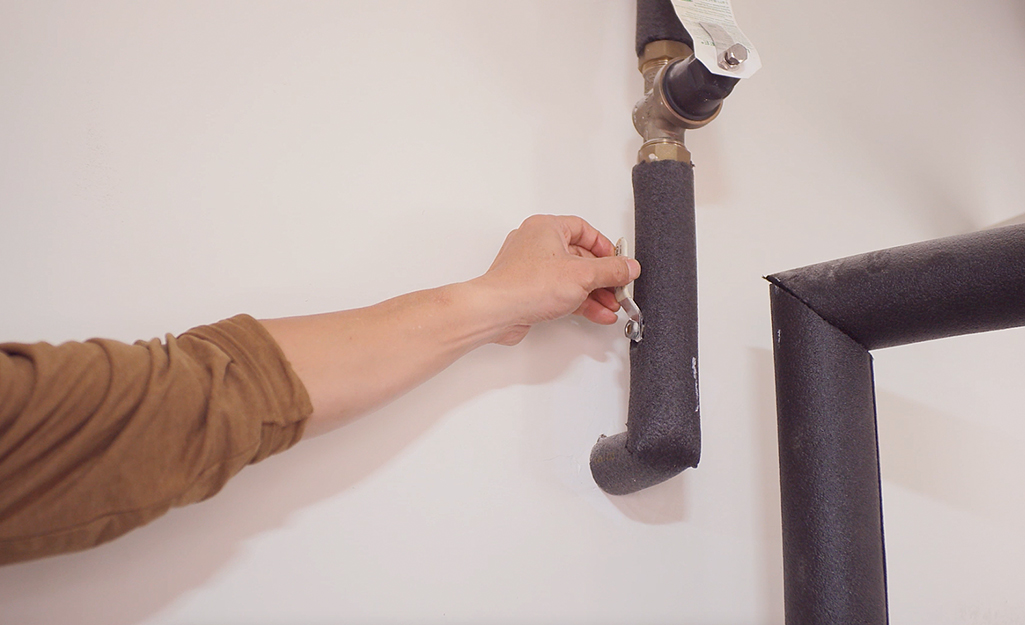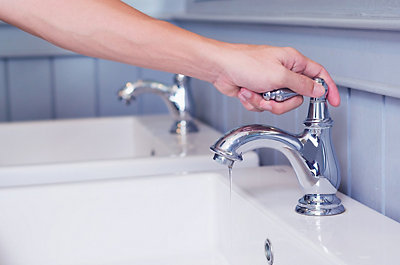Motives Why It's Crucial to Fix a Leaking Faucet
Motives Why It's Crucial to Fix a Leaking Faucet
Blog Article
The publisher is making several good pointers on the subject of Should I Repair or Replace a Leaky Faucet? as a whole in the content underneath.

Trickling taps could seem like a small hassle, but their impact goes beyond simply the inconvenience of the sound. From drainage to sustaining unnecessary monetary expenses and health threats, overlooking a leaking tap can lead to different effects. In this short article, we'll look into why it's vital to address this common family issue without delay and properly.
Wastefulness of Water
Environmental Influence
Dripping faucets add substantially to water wastefulness. According to the Environmental Protection Agency (EPA), a single faucet leaking at one drip per second can lose greater than 3,000 gallons of water annually. This not only pressures water resources but additionally affects ecosystems and wildlife based on them.
Financial Expenses
Boosted Water Expenses
Past the environmental impact, leaking taps can inflate water bills significantly. The accumulated wastefulness over time translates into higher energy expenses, which can have been prevented with prompt repairs.
Prospective Residential Or Commercial Property Damages
Additionally, extended dripping can lead to harm to components and surfaces surrounding the tap. Water buildup can trigger discoloration, rust, and even structural issues if left ignored, resulting in added fixing costs.
Wellness Issues
Mold and Mold Growth
The constant visibility of dampness from a dripping tap produces an ideal environment for mold and mold growth. These fungis not just jeopardize interior air high quality but additionally pose health risks, especially for individuals with respiratory problems or allergic reactions.
Waterborne Illness
Stagnant water in trickling faucets can come to be a breeding ground for bacteria and various other virus, increasing the threat of waterborne conditions. Pollutants such as Legionella microorganisms prosper in stagnant water, possibly resulting in serious ailments when ingested or inhaled.
DIY vs. Expert Repair
Benefits and drawbacks of DIY Repair
While some might try to take care of a leaking tap themselves, do it yourself fixings feature their own collection of difficulties. Without proper knowledge and devices, do it yourself efforts can intensify the concern or result in insufficient fixings, lengthening the issue.
Benefits of Employing a Professional Plumber
Hiring an expert plumber ensures that the underlying root cause of the dripping faucet is dealt with efficiently. Plumbing professionals have the competence and devices to detect and repair faucet concerns successfully, saving time and minimizing the danger of additional damages.
Step-by-Step Overview to Fixing a Dripping Faucet
Devices Called for
Prior to attempting to fix a leaking faucet, collect the needed devices, including a flexible wrench, screwdrivers, substitute parts (such as washing machines or cartridges), and plumber's tape.
Typical Faucet Issues and Their Solutions
Determine the sort of faucet and the particular problem creating the drip. Usual troubles include worn-out washing machines, rusty shutoff seats, or faulty O-rings. Describe manufacturer directions or on the internet tutorials for detailed assistance on repairs.
Safety nets
Regular Maintenance Tips
To prevent trickling taps, carry out regular upkeep such as cleaning up aerators, inspecting for leaks, and replacing worn-out components promptly. Additionally, consider mounting water-saving devices or updating to a lot more effective components.
Relevance of Prompt Repair Works
Attending to trickling taps as quickly as they're observed prevents further water waste and prospective damages, inevitably saving both water and cash in the long run.
Impact on Residential Or Commercial Property Worth
Perception of Well-Maintained Property
Keeping a residential or commercial property in good condition, including resolving upkeep problems like leaking faucets, enhances its perceived worth and charm among possible buyers or tenants.
Impact on Resale Worth
Qualities with well-maintained plumbing fixtures, including faucets, command greater resale worths in the property market. Attending to dripping faucets can contribute to a favorable impact during residential or commercial property inspections and arrangements.
Ecological Obligation
Individual Contribution to Conservation
Taking obligation for taking care of dripping taps lines up with broader initiatives towards water preservation and environmental sustainability. Every individual's activities collectively make a considerable effect on maintaining precious resources.
Sustainable Living Practices
By prioritizing punctual fixings and embracing water-saving routines, people contribute to sustainable living practices that profit both existing and future generations.
Verdict
Resolving a trickling tap goes beyond plain ease; it's an important action towards preserving water, reducing financial costs, and protecting wellness and home. Whether with DIY repair services or expert assistance, taking action to deal with trickling faucets is a tiny yet impactful method to advertise accountable stewardship of resources and add to a healthier, extra sustainable future.
How to Fix a Leaky Faucet: Step-by-Step Repair Guide
A leaky faucet may seem like a simple annoyance, but if it's not fixed promptly, that leak could cost hundreds to potentially thousands. From water damage to mold, mildew, and high water bills, even a tiny leak can be catastrophic if left unattended. Damage like this can even affect the overall value of your home, so it's important to take the right approach for leaky faucet repair. You may need the help of a plumber in some cases, but we've got a few tips you can try on how to fix a leaky faucet before calling the pros.
Four Faucet Types
When you're learning how to fix a leaky faucet, the first step is knowing what kind of faucet you're working with! There are four common types.
Cartridge Faucets
Cartridge faucets come in one- or two-handled varieties. In one-handled cartridge faucets, hot and cold water combines in a single cartridge. In the two-handled versions, hot and cold water are controlled separately and mixed in the faucet.
Ball Faucets
Ball faucets have a single lever you push up and down to adjust the pressure and rotate to change the temperature. A slotted metal ball controls the amount of water allowed into the spout.
Compression Washer Faucets
They're the oldest type of faucet, but they're still used in many homes — especially older ones. Compression faucets have two separate handles that, when turned, raise or lower the washer that seals a water valve. This valve stops water from flowing through the faucet when it is turned off.
Disc Faucets
Disc faucets rarely need to be repaired due to their maintenance-free design. The water flow is controlled by two discs — the upper one raises and lowers against a fixed lower disc, creating a watertight seal. If your disc faucet starts leaking, you may need to replace the seals or clean residue buildup from the inlets.
Fixing a Leaky Faucet
Step 1: Turn Off the Water
Whether you're learning how to fix a leaky bathtub faucet or how to fix a leaky kitchen faucet, always turn off the water supply to your working area when you're fixing a leak. The last thing you want is a flood added to your list of things to fix.
Look for the shutoff valves below your sink or around the tub and turn them clockwise to stop the water flow. If your faucet doesn't have shutoff valves, you may need to turn off the water for the whole house. Check to make sure it's off by turning the faucet on. If nothing comes out, you're ready to start the repair.
Step 2: Take Apart the Faucet
How you disassemble your faucet depends on the type of fixture you have. You can use a flathead screwdriver to remove the caps on top of the handle or handles for cartridge and compression faucets. Inside, you should see handle screws. Unscrew these with a screwdriver to remove the handle.
Disc- and ball-style faucets will typically have an inlet screw near the handle, and removing that will reveal the interior of the faucet.
Detach the Valve Stem
For cartridge- and compression-style faucets, you'll see the inner valve stem or cartridge once you remove the faucet handles. If you have a compression faucet, unscrew the brass valve stem. If you have a cartridge faucet, pull out the cartridge. If your cartridge has been in place for a while, it may require some tools or extra force to remove it due to mineral deposits.
Examine and Replace Parts
Once you've removed the parts, check them out to confirm what needs to be replaced. You may see corroded rubber washers, O-rings, stems, or cartridges. On a ball-style faucet, check the seats and springs for damage.
If you need to repair a leaky disc faucet, check the inlet and seals on the lower disc.
Once you determine what parts must be replaced, visit your local hardware store. Bring the damaged parts with you to ensure you can purchase the correct components to replace them.
Clean Valves and Faucet Cavity
If you've removed a stem or cartridge, you may notice mineral buildup in the faucet's threads. Use white vinegar to clean the valve seat by soaking it for a few minutes, then scrub it away with a soft toothbrush and rinse with warm water. You can also clean the interior of the faucet in the same way.
Reassemble the Faucet
Once your faucet is cleaned and the required parts have been replaced, it's time to reassemble it. Put the pieces back together and slowly turn the water supply back on. Doing this slowly is crucial because too much initial water pressure can damage the new hardware you've just installed.
https://homewarranty.firstam.com/blog/how-to-fix-leaky-faucet

We were shown that report about Water Dripping from Faucet: Why and How to Fix from a buddy on our other blog. Are you aware of another individual who is interested in the niche? Why not share it. We value your readership.
Report this page